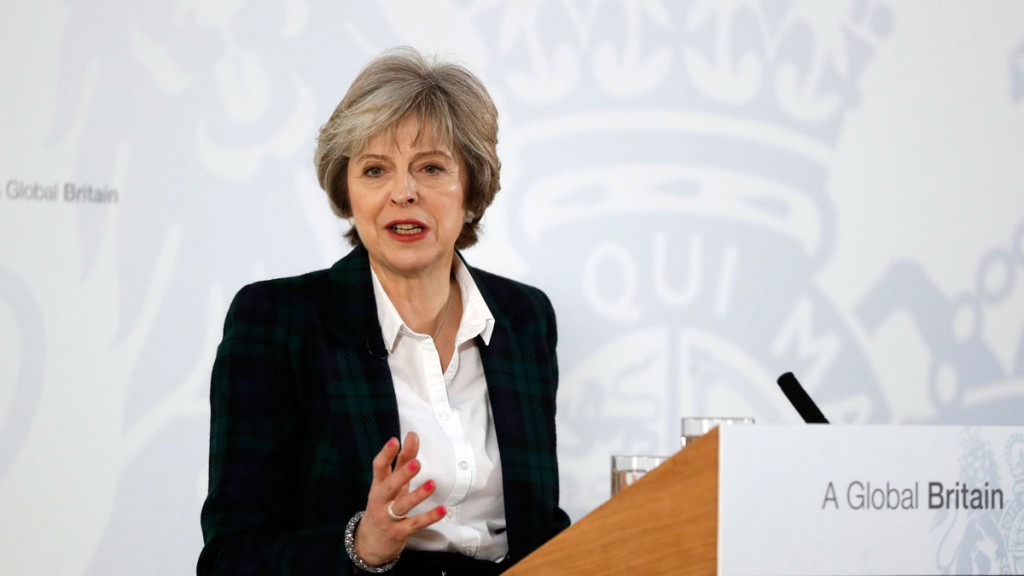
So yesterday’s big news was of course Theresa May’s Brexit speech.
The market story was sterling’s monster rally off the back of it.
Is that it? Is the worst over for sterling now?
It could well be…
The pound’s miraculous recovery
If ever there was a case of “buy the rumour, sell the news”, this was it. Or, to be more accurate “sell the rumour, buy the news”.
Sterling sold off hard in the days running run up to May’s speech.
Early on Monday morning it hit $1.19. It hadn’t been that low since, well, May’s last big speech on the subject – back in October, when we got the “flash crash”.
Only this time, sterling rallied.
Those who try to make sense out of markets will be scratching their heads. Britain votes to leave the European Union. Sterling sells off. The prime minister gives a forthright speech about leaving. Sterling sells off even harder. The prime minister gives another forthright speech about leaving. Sterling rallies.
The spin will be that, this time, the path to Brexit is clearer, that May is “taking control”, or some such. But the reality is probably more mundane: the selling for now is exhausted.
My outlook for sterling is a positive one. The logic, if you can call it that, is simple – childishly so. Our economy is doing well. I think it will continue to do well. Its success is currently not priced in to our currency. Our currency is cheap – too cheap – and it will return to fair value.
At lunch yesterday, I ran into an old friend. He is a visual special effects producer. TV and film post-production is a notoriously competitive, cut-throat business, and intensely difficult to succeed in. Soho rents are high. New, ever-improving and evolving technologies keep coming along that disrupt existing businesses.
But in over 20 years in the industry, my friend has never known it so busy. His company is doing perhaps 25% more business since June. It is the same across the entire sector, he says. Money is flooding in from overseas to buy our post-production expertise.
The UK has always offered quality post-production, of course. But at a 20% discount, thanks to the cheap pound, that quality is proving irresistible to buyers.
Post-production is just one small example of what is going on, of course. But small and medium-sized businesses, which are the backbone of the UK economy, are having a good time of it at present, particularly if they are competing in international waters.
Sebastian Chambers, partner with management consultancy CIL, which works with a number of small and medium-sized businesses in the UK, helping them to grow, says: “Small and medium-sized businesses are thriving. And it’s not just because of currency weakness. It’s across the board, in every sector, apart from maybe energy.
“Healthcare, education, business and financial services, consumers, construction, manufacturing and technology. I’m seeing so many businesses, which are enjoying double-digit growth year on year.
“Activities which used to be done at enterprise level are now being done by some small businesses nobody’s ever heard of more efficiently and at better value. Mortgage advice or foreign currency transfers, for example – financial services which used to be delivered solely by banks, now more and more are being done elsewhere. But the mainstream media is just not picking up on it.”
The bottom line is that the products and services this country offers are good. And at the moment, they’re very cheap – too cheap. They will return to fair value in time. They will revert to the mean. In fact, they’ll probably get too expensive. But that is the natural progression of business and forex.
But the boom currently being enjoyed tells you just how undervalued the pound is. It will not last for ever. Make hay while it does.
Next stop for sterling – $1.27
We can expect another rocking of the ship when Article 50 is triggered. There will be plenty more rocking as the negotiations develop. But my interpretation is that the biggest waves of the sterling storm have now passed.
They first hit in June. They struck again in September and October. They will weaken as more and more people first accept, then thrive from Brexit.
The last selling wave was of a less severe magnitude. Volume was not as high and the lows held. A double bottom is in place. We can now look forward to good times ahead for sterling.
My first target on this move is $1.27, and perhaps we’ll get there before Article 50 is triggered in March. We can expect another wobble after that. My next target after that is $1.29-$1.30.
Below for your reference are two charts of sterling, first against the US dollar, then against the euro. Against the dollar we have a textbook double bottom in place – a low was made. It was retested and it held. That is a sign of strength.
Against the euro the October low was not even retested. A higher low was made.
It might be that our exit turns out to be so chaotic we get all sorts of currency chaos, and pound goes to parity against the dollar. There is a chance of that, but it’s not so likely, I’d say. The selling, the panic, the upheaval – it’s all subsiding.
For now Theresa May and her team are bossing it. Let’s see how long it lasts.